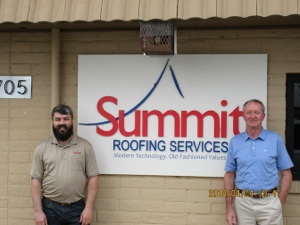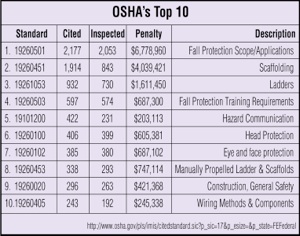Tom Asbury is preparing to step into a major role as the 44th president of the Western
States Roofing Contractors Association (WSRCA). A long-time member and recent board
member, Asbury will take over duties from Don Fry at this year’s WSRCA Convention June
8-10 in Las Vegas, Nevada. He has some big ideas and goals for the WSRCA, and looks
forward to carrying the torch forward for an association that has done so much for him and
his business over the years.
Asbury has been in the roofing industry for 45 years, having started in 1973 alongside his brother in Oakland, California. He worked continuously on the roof before moving into managing the service department, in 1989. He then worked in sales and management for the Bryant Organization. Asbury is currently the owner of Summit Roofing Services, a commercial and industrial roofing contractor based out of Manteca, California, that services Northern California and Northern Nevada. “I operate as the president, head estimator, and head sales guys,” explains Asbury. “We run it pretty lean, with about 25 roofing contractors and four people in the office.”
Summit Roofing Services focuses on commercial reroofing, but Asbury and his team will occasionally take on new construction. “There are a handful of general contractors that I know and they know me,” he says. “I try to stay out of the public works if I can.” While they mainly use single-ply, cold and hot BUR, and membrane roofing, they also utilize coatings and repairs in their repertoire.
Asbury is a strong proponent of the benefits of being a WSRCA member. “You’re foolish if you don’t join a local, regional, or national association, and you’re foolish if you don’t join the WSRCA,” he says. “It’s treated me very well and I recommend joining and being active in it.” As a man who has spent 99% of his adult life in the roofing industry, Asbury looks forward to transitioning from board member to president, and he has quite a few good ideas in mind for his year in office.
Western Roofing (WR): What are the main problems on the job that you encounter regularly?
Asbury: A lot of times, people, especially in California, have an issue with hot
asphalt built-up jobs and cold process jobs that are using solvent materials.
They simply don’t like the smell. Because of this, we have to perform 90% of
these types of jobs during off hours. This includes any job that is near a school
or office building, for example, that has tenants and occupants. It’s important
to remind people that an efficient and reliable roofing material is likely going to
have an odor. If you want it to smell like water, it’s going to work like water.
Additionally, roofing systems have gotten a lot more technical, and
that can be a challenge on a jobsite. Back in the day, BUR wasn’t rocket science.
Nowadays, you have two-part adhesives, urethanes, low-rise foams, and more
that require a lot more technical knowledge to install. Because of this, you have
to keep your workforce that much more educated, and our superintendents
have to be experts on what system they’re installing. We spend a lot of time
training our crew on these systems. We not only have an ongoing training
program for them, but we also get representatives from the manufacturers
that we use come show us how to properly install their products.
WR: What are your plans for the future?
Asbury: I don’t have plans to expand or grow Summit Roofing Services any larger than we are now. My son is in the business, my daughter would like to come into the business, and they’d both like to take it over from me. The long-term plan would include having them be actively involved and running the business so that I can ease myself out of it over time.
Also, with the way California is evolving, I’d like to get away from BUR and get more into coatings and single-plys. I do some high-risk work right now, but I’d like to move away from that to make the business a little less challenging for my children to run.
WR: Do you have any hobbies or activities?
Asbury: In my off hours I like to enjoy time with my family and my wife of 30 years. I like to play as much golf as I can get in, too. I have season tickets to the Raiders, so it looks like I’ll be traveling to Las Vegas, Nevada, more often now.
WR: What problems or concerns are we facing in the West that are unique to this part of the country?
Asbury: Working in California, all the VOC compliance has hampered what materials you can and can’t use. If California had their way, everything would be non-odor and non-solvent, but you need solvents to make most roofing systems work correctly.
Another problem that everyone is experiencing in the Western states is the labor shortage. We simply are not seeing the amount of qualified workers needed to get the amount of jobs that are being thrown our way completed. We need to find ways to recruit skilled workers who are willing to get on the roofs.
WR: What makes the WSRCA unique?
Asbury: The WSRCA provides resources that other organizations don’t.
Specifically, this includes safety programs, legal assistance, networking,
and technical data and bulletins, which all provide huge returns on
investment.
WR: Does the WSRCA have any special projects, programs, or studies
going on at the present time?
Asbury: We’re currently looking at modified and its thickness. We’re also looking at modified felts, low-rise foam adhesives, and waterproofing.
WR: How will these projects or studies help the Western roofing industry turn out a better product and help members improve their business?
Asbury: These projects and studies put pressure on the manufacturers to take a look at the quality control aspect of the business. If we as contractors can put enough pressure on them by either notifying them or rejecting products that we know we have problems with, I think it will benefit all of us in the Western states.
WR: How is the current economy affecting the West for contractors?
Asbury: There hasn’t been a slow down in the commercial side that I’ve seen. I had my best year, volume wise, in 2016. Then, in 2017 I exceeded it by another 20%. With the labor shortage, you’re not seeing estimators and superintendents striking out on their own to create competition. So, recently I’ve seen clients have contractors turn down jobs because they’re too busy with other projects. The labor shortage has created an inability for new businesses to pop up and take away from current contractors. I think we’re good for another two or three years before a recession cycles back to the economy.
For the WSRCA as an organization, the economy has helped bring membership up, but not as much as the Board of Directors would like. We’re just hovering around 300, but if you go back a couple years to when we were at 270-280, you’ll see there hasn’t been substantial growth.
WR: What would you consider the most pressing problem facing roofing contractors in the West today?
Asbury: As I’m sure other roofing contractors will agree, the labor
shortage that we’re experiencing is another problem that we encounter
regularly. It’s been hard to find good people that want to get into the
trade. I passed on some jobs last year because we didn’t have the
manpower to complete them. Immigration laws are clearly an issue
right now. Many times, a client will have me verify that my workers are
citizens before hiring us, and I want to also make sure that I’m hiring
the right guys who are willing to work. I think every contractor is faced
with the same issue right now. The workforce is starting to age without
a lot of new people coming in to fill those gaps. I’m not quite sure what
it’s going to look like in ten years.
WR: Has membership increased or decreased in recent years? Do you
expect it to increase in the near future?
Asbury: Membership has increased over the last few years, and I see growth in the organization as the board continues to work on membership growth and retention initiatives. This includes monthly group phone calls to review the status of the organization’s membership and what the board can do to help.
WR: What is the toughest problem the WSRCA faces as an association right now?
Asbury: I think that we have two. The first is figuring out how to maintain a steady growth in membership without remaining stagnant. The second problem is that the Board of Directors is at its lowest total. If the industry is facing a labor shortage in the field and in the office, that’s going to affect the number of people coming in to serve on the board. As the Board of Directors gets older, the WSRCA as an association needs to find a way to get young people to come serve on the board.
WR: What does the association have to offer the roofing industry and roofing contractors?
Asbury: Our technical bulletins are an incredible asset to roofing contractors. Also, since I’ve been active within the WSRCA, I’ve seen the association evolve into a more well-known voice within the ASTM, NRCA, and more. We’ve made our presence known and we’re working together with these other organizations to raise the standards of the industry.
WR: What does the WSRCA offer that other associations, both local and national, can't?
Asbury: The WSRCA offers legal services, safety services, and technical bulletins, which are huge assets to the Western roofing contractor. While local associations are good for updating members on local regulations, they do not have the ability to offer everything that the WSRCA can.
WR: You've been with the WSRCA for quite a while. How long? Why did you join the association?
Asbury: I joined in 2001, the first year I started my business. At that time, it was a requirement for the type of work that I was doing. You had to be a member of the NRCA and the WSRCA. Then, it became apparent to me all the benefits that the WSRCA provides. I didn’t fully realize all of those benefits until I became a board member.
WR: As the new president, what are your immediate goals? What do you hope to accomplish during your term in office?
Asbury: My immediate goal is to continue on the same pathway as the previous three or four presidents that I’ve worked closely with. That includes the technical aspect, membership, and providing value to the members.
My long-term goal is to make the safety aspect of the WSRCA more robust. I’d like to introduce opportunities for contractors to have ongoing training. That could be offering webinars on project management, plan reading, and leadership, as well as some three-day training expos. I think the workforce would greatly benefit from some kind of training program offered by the WSRCA. Furthermore, I would like to encourage more women to get into the roofing industry. I’d like the WSRCA to explore more ways to reach out to that demographic.
WR: How is the 2018 convention shaping up?
Asbury: We’re sold out already and we’ve expanded our booths to 350. Our keynote speakers, Roy Firestone, Craig Brightup, and Reid Ribble, are on the docket and we’re very excited to hear from them. We have some exciting new features this year, too. We’re going to have a member’s-only lounge near the registration booth. The WSRCA booth will be set up the same as last year, with board members manning it and answering questions, but there will be a member’s-only area there, too. The auction for the Davis Memorial Foundation will start 1/2 hour early for members, with a separate entrance for them as well. As for the Davis Memorial Foundation, we have the largest amount to award ever this year with $100,000 in scholarships.
WR: A year from now, what do you want people to say about your term in office?
Asbury: I’d like people to say that I did a good job carrying the torch forward from the previous president.




















